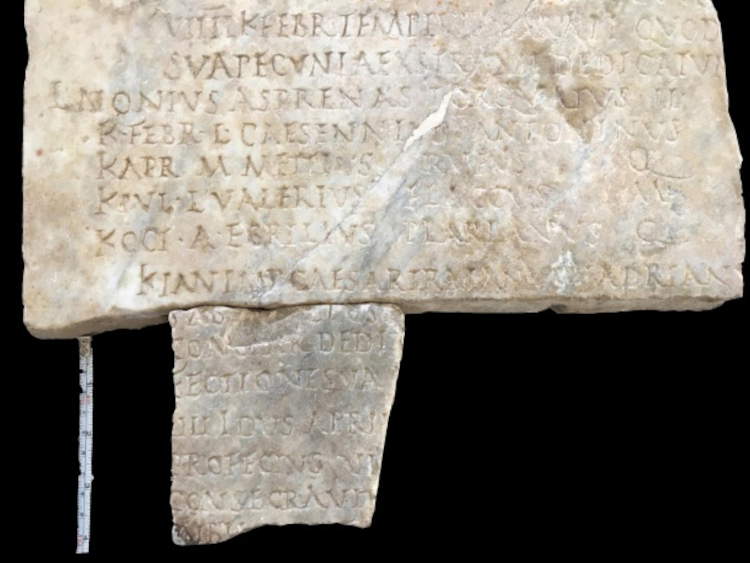Two new fragments of the Fasti Ostienses have been found in the Ostia Antica Archaeological Park, following investigations carried out inArea B of the site, corresponding to the Forum of Porta Marina. These are a kind of chronicle engraved on marble slabs: they report valuable news about the political and monumental history of Rome and Ostia from 49 B.C. to 175 and perhaps beyond. Their editing was the responsibility of the pontifex Volcani, the highest local religious authority.
The findings emerged from the second excavation campaign of the Ops - Ostia Post Scriptum project, curated by the Park in collaboration with the University of Catania and the Polytechnic University of Bari. The excavations also brought to light the remains of several decorations and extensive portions of mosaic floors.
“This is an extraordinary discovery that, if on the one hand increases and complements what we know about the activity of the great emperor who was Hadrian by bringing new acquisitions on the very important building activity he conducted in Rome, on the other hand it reconfirms the immense potential of ancient Ostia for an ever deeper knowledge and popularization of our past,” said the director of the Archaeological Park of Ancient Ostia, Alessandro D’Alessio.
One of the two recovered fragments, which connects perfectly with another one already preserved in Ostia and referable to the chronicle of the years 126-128 AD, mentions facts and events that took place in Rome in 128, during the reign of Hadrian. By cross-referencing this information with information from other sources (literary, epigraphic and numismatic), it was possible to clarify the content of the text from which it appears that on January 1, 128, Hadrian assumed the title of pater patriae and his wife Sabina that of Augusta. To celebrate these titles the emperor offered the people a congiarium, or handout of money (Congiar Dedit reads the inscription). Subsequently, on April 10, 128 (ante diem III Idus April reads the inscription) the emperor left for Africa and, returning to Rome between late July and early August and before traveling to Athens, consecrated (Consecravit, reads the inscription) a building, certainly a temple in the Urbe. There are two possibilities: the Pantheon, or more likely the Temple of Venus and Rome. According to a very suggestive hypothesis, the consecration may have taken place on August 11, 128 A.D., or on the anniversary of Hadrian’s accession to the throne in 117.
“Even the latest excavation campaign just completed in the Ostia Archaeological Park,” said Culture Minister Gennaro Sangiuliano, "gives us treasures of inestimable value and invaluable documentary sources for understanding the activities of the great emperor Hadrian. The discovery of two fragments of the Fasti allows us to unveil important pieces of the life of Ostia and the capital. These excavations have also brought to light the remains of several decorations and extensive portions of mosaic floors that will soon be visible to the public, just as has already been done at other archaeological sites in our nation thanks to the activity put in place in recent months by the Ministry of Culture.
 |
| Two new fragments of the Fasti Ostienses found in the Ostia Antica Archaeological Park |
Warning: the translation into English of the original Italian article was created using automatic tools. We undertake to review all articles, but we do not guarantee the total absence of inaccuracies in the translation due to the program. You can find the original by clicking on the ITA button. If you find any mistake,please contact us.